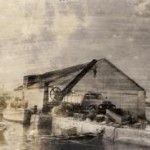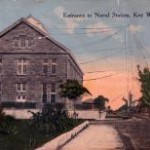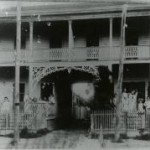Downtown
Thompson's Fish House Museum
This wooden structure was built by Norberg Thompson. It has seen many uses but began as a fish and turtle packing house serving destinations throughout the world. Submerged wooden cages beneath the building used to house exotic fish for sale to aquariums. In later years it was a marine engine repair and ship wright's shop. During the golden days of shrimping in the 1950s, it became the epicenter of the shrimp industry with nearly 500 shrimp trawlers in port at a time.
Mel Fisher Maritime Museum
This building was built on the outskirts of the naval base named for President Truman. The Navy constructed the structure for a dual purpose.The main part of the building was used for general storage with the top floor retrofitted for coal storage. Steamships were the heart of the naval fleet. An abundant supply of coal was vital for the fleet and the high volume of commercial shipping that used the port. This part of the waterfront was covered with coal buildings and additional storage space was needed.
The Arch House
The Arch House and is the oldest remaining Carriage House in the Historic District. It is recognized as a novelty of architectural design and function. In the 1880s, it was uncommon for the average person to possess a horse much less a carriage. Horses, building materials, and the essentials of life had to be brought from the mainland by sail boat. The house and an adjoining cigar factory stand as testament to an era of wealth and prosperity from the Civil War until 1910.
Old Coca-Cola Bottling Court
In 1892, a hardware store was constructed here to service the surrounding cigar and fishing industry. By 1914 Jack and Rosa Williams opened Jack's Saloon. The saloon was well situated to wet the whistle of sailors, fishermen, and the public. By 1923, the building was transformed into the Coca-Cola Bottling Plant. Bottling machines carrying glistening bottles of the refreshing drink were visible through the front windows. With the advent of the Overseas-Highway, the bottling plant closed and Coca-Cola products were trucked in from the mainland.
Sponging Docks
The first shipment of sponges left Key West and arrived in New York in 1849 starting an island industry that lasted 50 years. Sponges grow in sponge beds in 20 feet of water. They are harvested using a pole with a pronged rake on the end to snare the sponges. By 1890, Key West held a monopoly on the sponge trade in the United States. At its peak, 1,200 spongers on 350 “hook boats†caught 2,000 tons of sponges a year.




